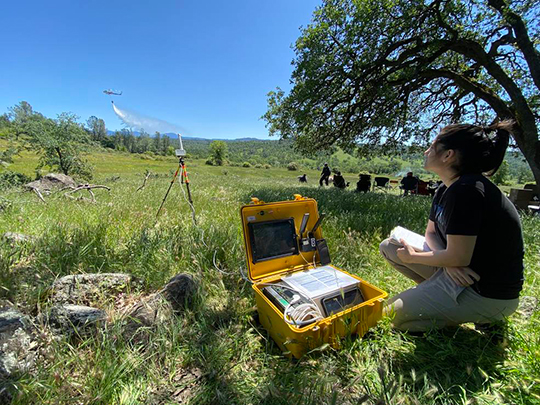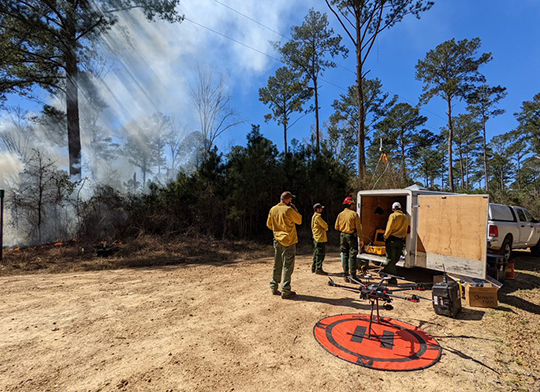|
|
 |

|
 |
 |
The aim of the Scalable Traffic Management for Emergency Response Operations (STEReO) effort is to use innovative communication approaches to enable new traffic management and autonomous vehicle capabilities. One important aspect of this goal is the ability to generate increased air traffic situational awareness between small UAS (sUAS) pilot operators. Led by NASA’s Airspace Operations Laboratory in partnership with the U.S. Forest Service, a single-user tool, the Unmanned Aircraft System Pilot Kit (UASP-kit), was developed that enhances airspace awareness to sUAS pilot operators conducting disaster response operations.

NASA researcher in the field evaluating a UASP-kit during a wildland firefighting operation
The UASP-kit is a small-scale prototype designed to be self-contained and portable. To enable increased air traffic situation awareness, the initial components include a display and a communications infrastructure that collects Automatic Dependent Surveillance-Broadcast (ADS-B) messages to give the user a view on positions of active crewed vehicles in the nearby airspace. This ability is especially critical and extremely beneficial in low connectivity areas with poor cellular-network coverage. The user can define filters or proximity alerts specific to their mission objectives. Today, wildland fire firefighters utilize the UASP-kit by selecting geospatial element features and to display maps with topographical layouts and information about fire and firefighting plan by importing geospatial PDF (GeoPDF) data.

Wildland firefighting personnel setting up a UASP-kit during a training exercise
NASA researchers continue to evaluate the latest generation of the UASP-kit in the field, integrating feedback into subsequent versions. Its application in the firefighting domain is just the first step towards the further development and utilization of sUAS in other domains. Future developments will be the enabling of technology for Beyond Visual Line of Sight (BVLOS) operations. The next step for the UASP-kit is to test the integration, data sharing and management of multiple UASP-kit units connected together.
Point of Contact: Joey Mercer, M.S., NASA Ames Research Center |
|
|